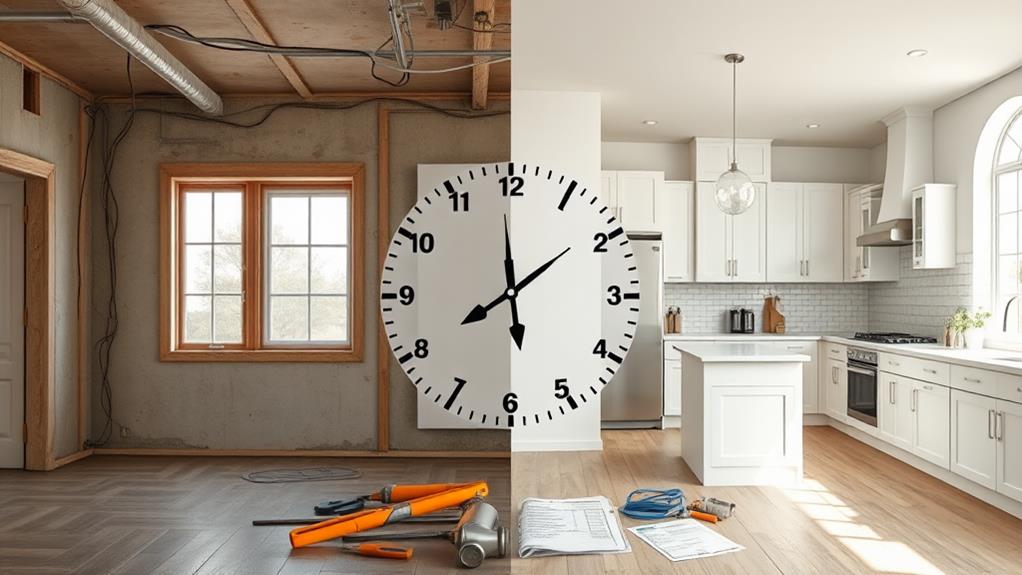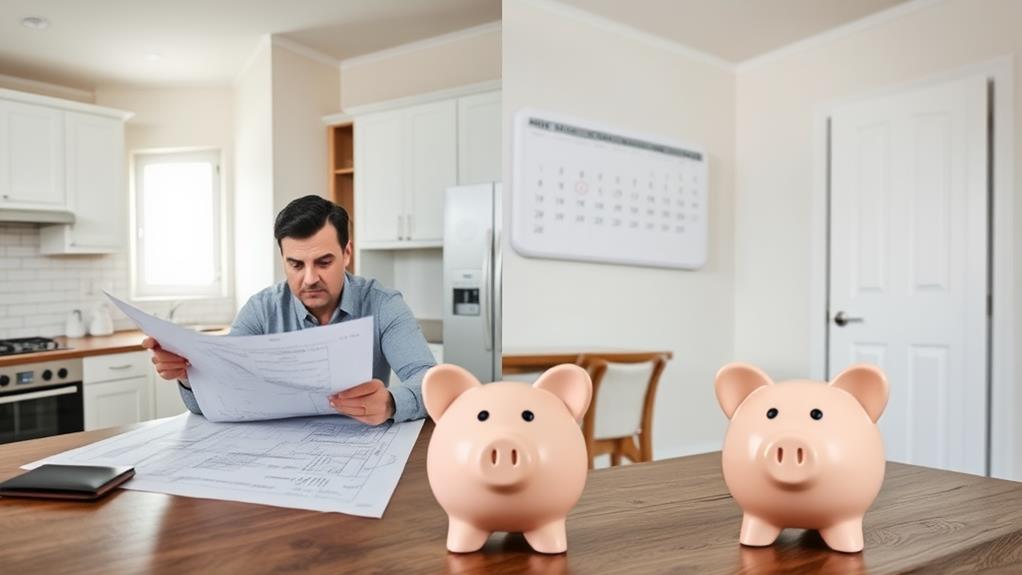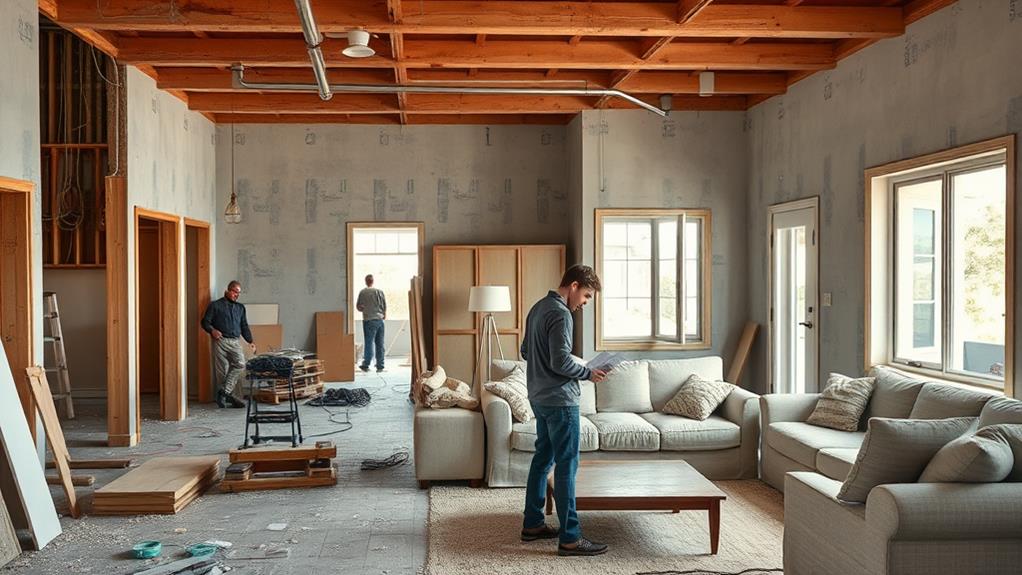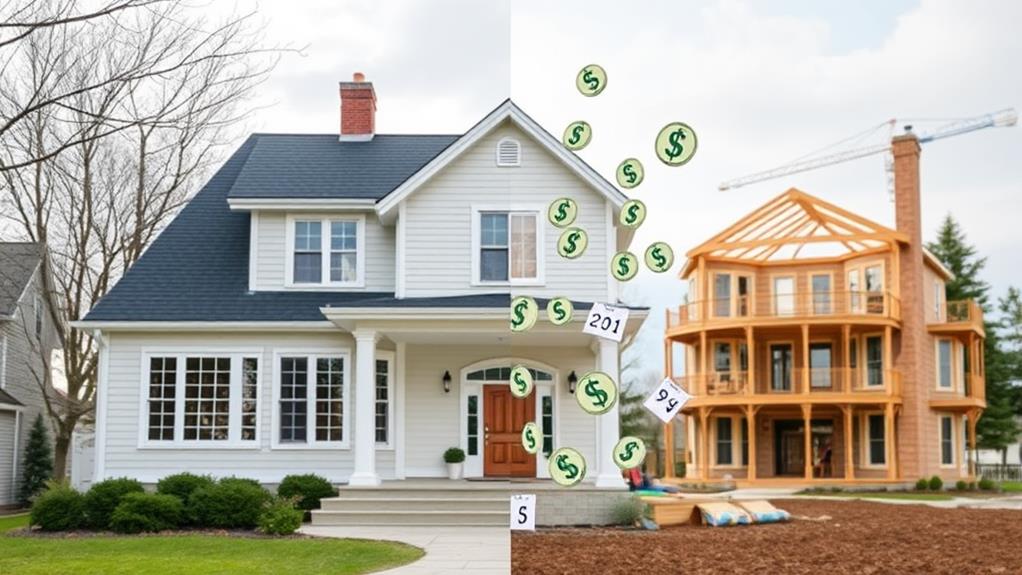Phased renovations offer a strategic approach to home improvement, breaking large projects into manageable segments. This method allows homeowners to spread costs over time, reducing the need for substantial upfront investments. It provides flexibility in project planning, enabling adjustments based on evolving priorities or financial circumstances. Homeowners can capitalize on seasonal discounts and better manage their cash flow. However, phased renovations may lead to prolonged disruptions, potential cost fluctuations between phases, and challenges in maintaining consistency. While offering budget-friendly advantages, this approach requires careful planning and coordination to ensure successful completion. Understanding the full scope of pros and cons can help homeowners make informed decisions about their renovation strategy.
Understanding Phased Renovations

Phased renovations represent a strategic approach to home improvement projects, allowing homeowners to spread out both the work and the associated costs over an extended period. This method involves breaking down a large-scale renovation into smaller, manageable segments that can be completed sequentially. Each phase focuses on specific areas or aspects of the home, such as the kitchen, bathrooms, or exterior improvements.
By adopting a phased approach, homeowners can prioritize their renovation goals based on urgency, budget constraints, and personal preferences. This strategy enables better financial planning and cash flow management, as expenses are distributed over time rather than incurred all at once. Additionally, phased renovations offer flexibility in decision-making, allowing homeowners to reassess their needs and adjust plans between phases.
The process typically begins with a comprehensive assessment of the property and the creation of a master plan. This plan outlines the overall vision for the renovation and establishes a logical sequence for tackling different areas of the home. Careful coordination between phases is essential to ensure coherence in design and functionality throughout the renovation process.
Financial Benefits of Staged Remodeling
With staged remodeling, homeowners can reap significant financial benefits. This approach allows for better budget management by spreading costs over time, reducing the need for large upfront investments or substantial loans. By focusing on one area at a time, homeowners can allocate funds more efficiently, potentially avoiding interest charges associated with financing the entire project at once.
Staged renovations also provide flexibility in adapting to changing financial circumstances. If unexpected expenses arise or income fluctuates, homeowners can adjust the pace of renovations accordingly. This method allows for strategic planning, enabling individuals to tackle high-priority areas first while saving for more extensive upgrades later.
Another financial advantage is the ability to capitalize on seasonal discounts and promotions for materials and labor. By timing each phase strategically, homeowners can take advantage of off-season rates or end-of-year sales. Additionally, phased renovations allow for more accurate cost estimations, as prices for materials and labor can be assessed closer to each stage's start date, reducing the risk of budget overruns due to long-term market fluctuations.
Spreading Costs Over Time

One of the most significant advantages of phased renovations is the ability to spread costs over an extended period. This approach allows homeowners to manage their budget more effectively by dividing the total renovation cost into smaller, more manageable portions. Instead of facing a large, lump-sum expense, individuals can allocate funds gradually, aligning with their financial capabilities and income patterns.
Phased renovations enable homeowners to prioritize essential improvements while deferring less critical updates. This flexibility helps in avoiding high-interest loans or depleting savings accounts. Additionally, spreading costs over time provides an opportunity to save for each subsequent phase, potentially reducing or eliminating the need for financing. It also allows for better financial planning, as homeowners can adjust their spending habits and allocate resources accordingly.
Moreover, this approach can be particularly beneficial for those expecting future income increases or anticipating significant life changes. By staging renovations, homeowners can align project timelines with their evolving financial situation, ensuring that each phase is comfortably within their means. This strategy minimizes financial stress and provides greater control over the renovation process, ultimately leading to a more sustainable and manageable home improvement journey.
Flexibility in Project Planning
Adapting to changing circumstances is a key benefit of phased renovations in project planning. By dividing a large renovation project into smaller, manageable phases, homeowners and project managers gain the ability to adjust their plans as needed. This flexibility allows for modifications based on evolving priorities, unforeseen challenges, or shifts in budget constraints.
Phased renovations enable decision-makers to reassess and refine their plans between stages. As each phase progresses, valuable insights are gained about the property's condition, potential issues, and the effectiveness of chosen design elements. This information can be used to optimize subsequent phases, potentially saving time and resources. Additionally, phased planning allows for the incorporation of new technologies or design trends that may emerge during the project's timeline.
The flexibility inherent in phased renovations also facilitates better resource allocation. If unexpected expenses arise in one phase, adjustments can be made to future phases to maintain overall budget alignment. This adaptability extends to scheduling as well, allowing for better coordination with contractors and minimizing disruptions to daily life during the renovation process.
Potential Drawbacks and Challenges

While phased renovations offer numerous benefits, they also come with several potential drawbacks and challenges. One significant issue is the prolonged disruption to daily life or business operations. As renovations occur in stages, occupants may face extended periods of inconvenience, noise, and dust.
Cost fluctuations pose another challenge. Material prices and labor costs can increase between phases, potentially inflating the overall budget. Additionally, starting and stopping work multiple times may lead to higher labor expenses due to repeated mobilization and demobilization of contractors.
Maintaining consistency across different phases can be difficult, especially if there are long gaps between stages. Design preferences, material availability, and building codes may change, resulting in a disjointed final appearance or functionality.
Phased renovations also risk leaving projects incomplete if funding runs out or priorities shift. This can lead to partially finished spaces that are neither fully functional nor aesthetically pleasing.
Lastly, coordinating multiple phases requires meticulous planning and management. Delays in one phase can have a domino effect on subsequent stages, potentially derailing the entire project timeline and budget.
Impact on Daily Life
Disruption is an inevitable companion to phased renovations, significantly impacting the daily lives of occupants. Living in a construction zone can be stressful, with noise, dust, and restricted access to certain areas of the home. Residents may need to temporarily relocate or adapt their routines to accommodate work schedules and limited functionality of spaces under renovation.
The prolonged nature of phased renovations can lead to renovation fatigue, as occupants continuously navigate changing living conditions. Privacy may be compromised due to the presence of workers, and daily activities like cooking or relaxing can be challenging in partially completed spaces. However, phased renovations allow for better adaptation to changes over time, potentially reducing the overall stress of a large-scale project.
On the positive side, phased renovations can maintain some semblance of normalcy by keeping portions of the home functional throughout the process. This approach allows occupants to continue living in their homes, avoiding the need for extended alternative accommodations. Additionally, the gradual transformation of living spaces can be exciting, providing a sense of progress and anticipation as each phase is completed.
Extended Timeline Considerations

How long can homeowners realistically endure a phased renovation project? The answer varies depending on individual circumstances, but most experts agree that phased renovations should not exceed 18-24 months to maintain sanity and project momentum. Extending beyond this timeframe can lead to renovation fatigue, increased stress, and potential project abandonment.
Extended timelines in phased renovations require careful planning and consideration. Homeowners must account for potential market fluctuations affecting material costs and labor availability. Longer projects may also necessitate multiple permit applications and inspections, adding complexity and potential delays.
Additionally, evolving design trends and personal preferences over time may lead to inconsistencies in the overall renovation vision.
Financial planning becomes crucial for extended timelines. Homeowners should budget for potential cost increases, unexpected expenses, and the possibility of changes in their financial situation. It's also important to consider the impact on property value, as partially completed renovations may negatively affect resale potential. Balancing these factors with the benefits of budget management is essential for successfully navigating a phased renovation project over an extended period.
Adapting to Changing Needs
Throughout a phased renovation project, homeowners must remain flexible and prepared to adapt to changing needs. As the renovation progresses, unforeseen circumstances or shifts in priorities may arise, requiring adjustments to the original plan. This adaptability is a significant advantage of phased renovations, allowing homeowners to reassess and modify their goals as they go.
Changes in family dynamics, such as the arrival of a new baby or an aging parent moving in, can alter spatial requirements. Economic fluctuations may impact the budget, necessitating cost-cutting measures or reprioritization of renovation phases.
Technological advancements or emerging design trends might influence decisions on fixtures, appliances, or materials. Additionally, living through partial renovations may reveal unexpected issues or preferences, prompting revisions to subsequent phases.
To effectively adapt, homeowners should maintain open communication with contractors and designers throughout the process. Regular check-ins and progress evaluations can help identify necessary adjustments early on. It's also wise to build some flexibility into the budget and timeline to accommodate potential changes. By embracing adaptability, homeowners can ensure that their phased renovation project evolves to meet their changing needs and ultimately results in a more satisfying outcome.
Contractor Relationships in Phases

Maintaining strong contractor relationships is crucial in phased renovation projects. These long-term collaborations require clear communication, mutual trust, and consistent performance. Contractors who understand the project's phased nature can better anticipate challenges and allocate resources efficiently. They may offer valuable insights on sequencing work to minimize disruptions and optimize cost-saving opportunities across phases.
However, phased renovations can strain contractor relationships due to prolonged timelines and potential scheduling conflicts. Contractors may face difficulties in resource allocation, especially if there are gaps between phases. This can lead to crew reassignments or the need to re-familiarize with the project after breaks. Additionally, changes in material costs or building codes over extended periods may necessitate contract renegotiations, potentially causing friction.
To mitigate these challenges, homeowners should establish clear expectations from the outset, including potential phase durations and intervals. Regular check-ins and progress reviews help maintain alignment and address issues promptly. Flexibility in scheduling and a willingness to adapt to unforeseen circumstances are essential for both parties. By fostering a collaborative approach, homeowners and contractors can navigate the complexities of phased renovations more effectively, ensuring project success and long-term satisfaction.
Decision-Making for Your Home
Effective decision-making is crucial when planning and executing phased home renovations. Homeowners must carefully prioritize projects, considering both immediate needs and long-term goals. Start by assessing the current condition of your home, identifying areas that require urgent attention, and determining which improvements will add the most value.
Create a comprehensive list of desired renovations and rank them based on importance, cost, and potential return on investment. Consider the logical order of projects to avoid undoing previous work. For example, tackle structural issues before cosmetic upgrades. Evaluate your budget realistically and allocate funds accordingly, leaving room for unexpected expenses.
Research local building codes and permit requirements to ensure compliance throughout the renovation process. Consult with professionals, such as architects or designers, to help refine your vision and create a cohesive plan. Be prepared to make tough choices, potentially sacrificing less essential updates to accommodate more critical improvements.
Remain flexible throughout the process, as unforeseen challenges may arise. Regularly reassess your priorities and adjust your plan as needed, keeping in mind your ultimate goals for your home.
Frequently Asked Questions
How Do Phased Renovations Affect Property Value During the Process?
Phased renovations can temporarily affect property value during the process. Incomplete work may initially decrease value, but as each phase is completed, the property's worth gradually increases. Overall, the impact depends on the renovation's progress and market conditions.
Can I Live in My Home During All Phases of Renovation?
Like a chameleon adapting to its environment, you can often live in your home during renovations. However, it depends on the scope and nature of each phase. Some stages may require temporary relocation for safety and comfort reasons.
Are Permits Required for Each Phase or the Entire Project?
Permit requirements for phased renovations typically depend on local regulations. Generally, each phase may require separate permits, especially if they involve distinct aspects of construction. It's advisable to consult your local building department for specific requirements in your area.
How Do Weather Conditions Impact the Timeline of Phased Renovations?
Weather conditions can significantly impact phased renovation timelines. Outdoor work may face delays due to rain, snow, or extreme temperatures. Indoor phases can also be affected if exterior work isn't completed on schedule, potentially causing cascading delays throughout the project.
What Happens if I Want to Change Contractors Between Phases?
Changing contractors between phases is possible but can present challenges. Ensure proper documentation and project handover. New contractors may have different methods or pricing. Carefully review contracts and consider potential impacts on continuity and overall project cohesion.
Conclusion
Phased renovations offer a strategic approach to home improvement, akin to climbing a mountain in stages rather than attempting a single arduous ascent. While this method provides financial flexibility and adaptable planning, it also presents challenges in timeline management and contractor continuity. Homeowners must carefully weigh the long-term benefits against potential disruptions. Ultimately, the decision to embark on phased renovations depends on individual circumstances, budget constraints, and the desired balance between immediate transformation and gradual enhancement of living spaces.

